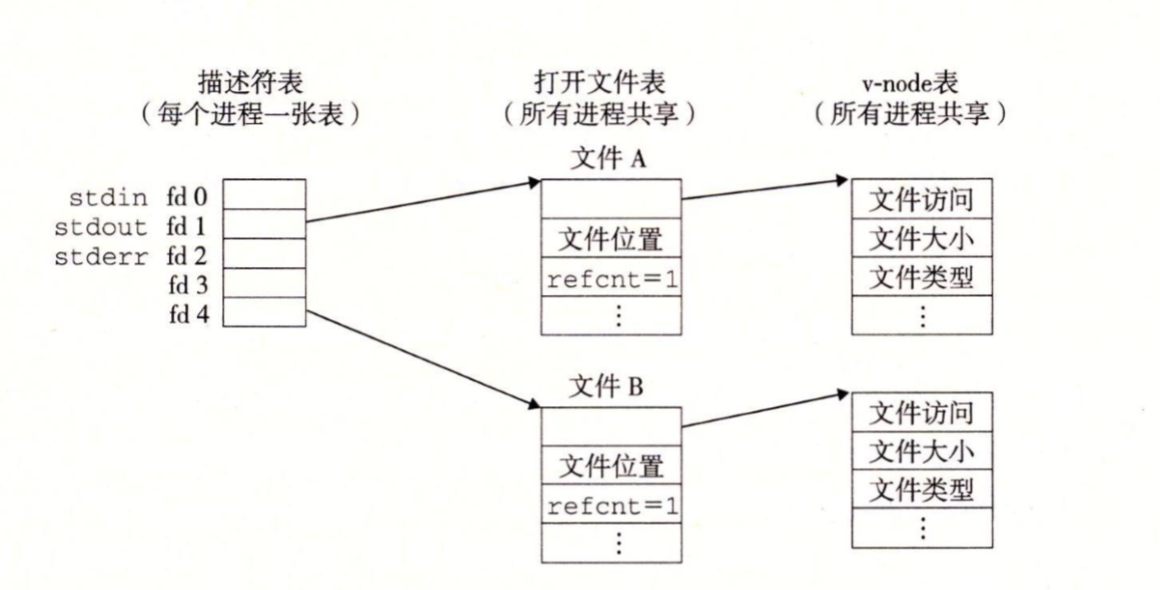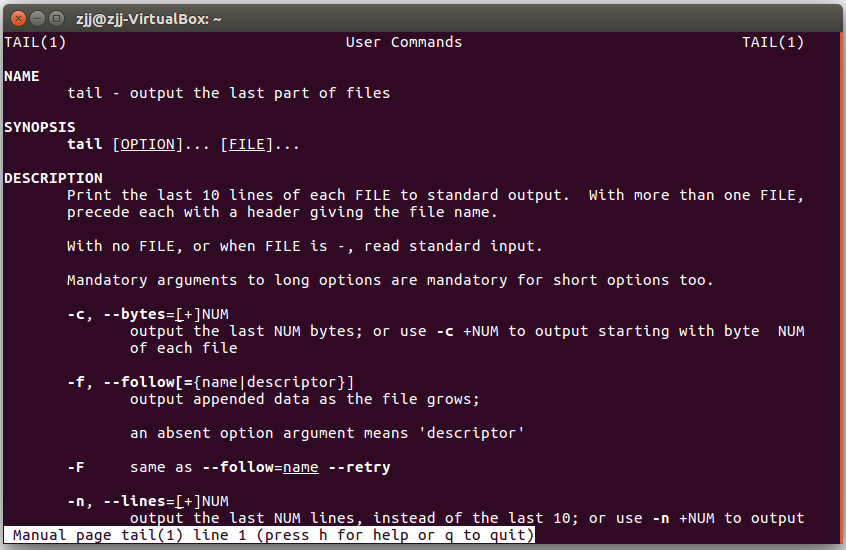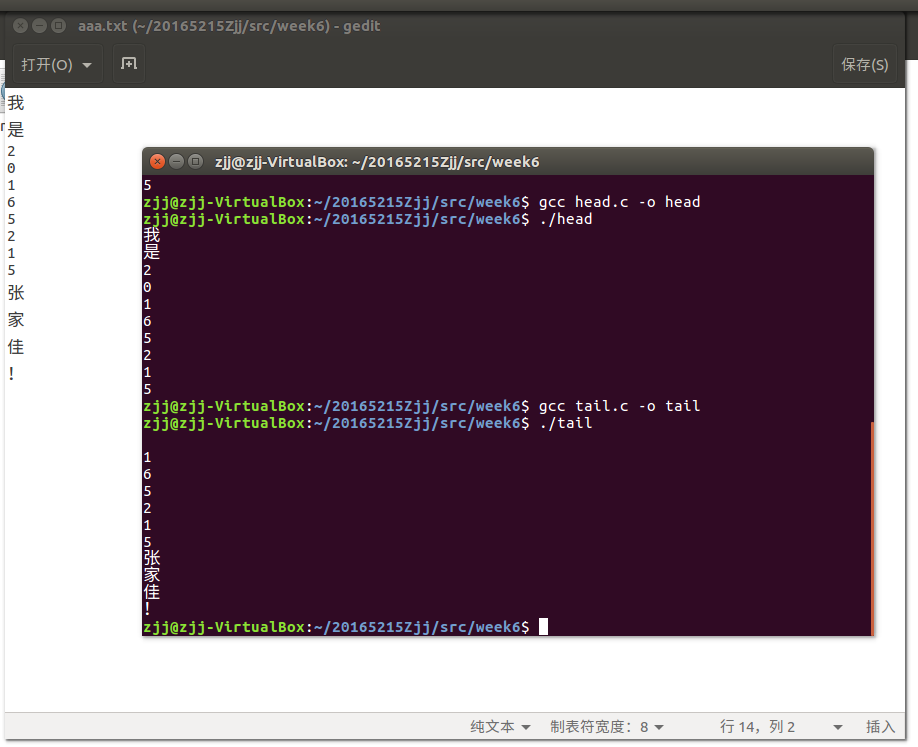2018-2019 20165215 《資訊安全系統設計基礎》第六週學習總結
阿新 • • 發佈:2018-11-04
2018-2019 20165215 《資訊安全系統設計基礎》第六週學習總結
Linux系統呼叫學習
作業系統(Operating System,簡稱OS)完成的工作比喻為兩個角色:服務生和管家婆
- 管家婆:
- 通過「檔案」對I/O裝置進行了抽象
- 通過「虛存」對主存和I/O裝置進行了抽象
- 通過「程序」對CPU、主存和I/O裝置進行了抽象
- 服務生:
- GUI:為小白使用者提供服務,你只會用滑鼠就可以使用作業系統
- Shell: 為高階使用者提供服務,你要記憶系統命令,更多通過鍵盤使用作業系統
- 系統呼叫:為專業使用者程式設計師提供服務,你可以建立自己的工具讓大家更好的使用作業系統
兩個重要命令:
man -k key1|grep key2|...根據關鍵字檢索系統呼叫grep -nr XXXX /usr/incldue查詢相關的巨集定義,結構體定義,型別定義等
其它知識點
man -k +函式名搜尋函式資訊man +數字+函式查到相關的命令和函式cat+檔名稱檢視文字檔案內容od +檔名稱檢視二進位制檔案內容- 在
SEE ALSO中得到相關係統呼叫的資訊
使用c語言實現who命令:

系統級I/O
- 輸入/輸出(I/O)是在主存和外部裝置之間複製資料的過程
- 文字檔案是隻含有ASCII或Unicode字元的普通檔案;二進位制檔案是所有其他的檔案。對核心而言,文字檔案和二進位制檔案沒有區別
- 呼叫open函式來開啟一個已存在的檔案或者建立一個新檔案的
#include <sys/types.h> #include <sys/stat.h> #include <fcntl.h> int open(char *filename, int falgs, mode_t mode); /* 成功則返回新檔案描述符,出錯返回-1; char *filename:函式將filename轉換為一個檔案描述符,並返回描述符數字;返回的描述符總是在程序中當前沒有開啟的最小描述符; int flags:指明程序打算如何訪問這個檔案; mode_t mode:指定了新檔案的訪問許可權位。 */
- 呼叫close函式關閉一個開啟的檔案
#include <unistd.h>
int close(int fd);
/* 成功則返回0,出錯則為-1。 */- 通過分別呼叫read和write函式來執行輸入和輸出
#include <unistd.h>
ssize_t read(int fd, void *buf, size_t n);
/* 成功則返回讀的位元組數,若EOF則為0,若出錯則為-1。 */
ssize_t write(int fd, const void *buf, size_t n);
/* 成功則返回寫的位元組數,若出錯則為-1。 */- 在x86-64系統中,size_t被定義為un-signed long,而ssize_t被定義為long
- 核心用描述符表、檔案表和v-node表這三個相關的資料結構來表示開啟的檔案;程式剛剛啟動的時候,0是標準輸入,1是標準輸出,2是標準錯誤,如果此時去開啟一個新的檔案,它的檔案描述符會是3;不同的檔案描述符也會指向同一個檔案

- 重定向的兩種方式:
linux>ls>foo.txt使得shell載入和執行ls程式,將標準輸出重定向到磁碟檔案foo.txt- 使用dup2函式,複製描述符表表項oldfd到描述符表表項newfd,覆蓋描述符表表項newfd
#include<unistd.h> int dup2(int oldfd,int newfd); /*返回,若成功則為非負的描述符,若出錯則為-1*/head,tail的使用
通過man head和man tail查詢可知head、tail的作用分別是顯示一個檔案的前十行和後十行


一、虛擬碼:
- head
void main( ){
計數標誌 count=0;
迴圈按字元讀入檔案
{
輸出字元;
if(讀入字元為回車符){cout++;}
if(count==10){退出迴圈}
}
}- tail
void main(){
統計檔案總行數n;
計數標誌 count=0
迴圈按字元讀入檔案
{
if(讀入字元為回車符){cout++;}
if(count>=n-10){
輸出字元
}
}
}二、產品程式碼
- head
#include <stdio.h>
#include <stdlib.h>
#include <sys/types.h>
#include <sys/stat.h>
#include <fcntl.h>
#include <unistd.h>
int main(int argc,char *argv[])
{
int count=0;
char ch;
int fd=0;
fd=open(argv[argc-1],O_RDONLY,0);
if(fd==-1){printf("Error!\n");exit(1);}
while(read(fd,&ch,1)!=0)
{
putchar(ch);
if(ch == '\n'){count++;}
if(count == 10){break;}
}
close(fd);
return 0;
}- tail
#include <stdio.h>
#include <stdlib.h>
#include <unistd.h>
#include <sys/types.h>
#include <sys/stat.h>
#include <fcntl.h>
int ct(int fd)
{
int count=0;
char c;
while(read(fd,&c,1)!=0)
{
if(c == '\n')
count++;
}
return count;
}
void mh(int fd,int n)
{
int count=0;
char c;
while (read(fd, &c, 1)!=0) {
if (c=='\n') {
count++;
}
if (count>=n-10) {
putchar(c);
}
}
}
int main()
{
int fd=0,ft=0;
int count;
fd=open("aaa.txt",O_RDONLY);
count=ct(fd);
close(fd);
ft=open("aaa.txt",O_RDONLY);
mh(fd,count);
close(ft);
return 0;
}執行截圖:

